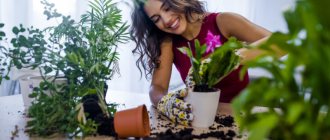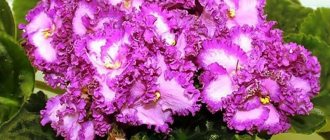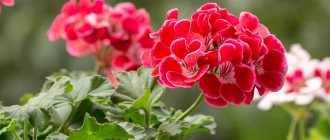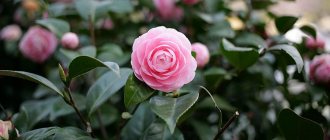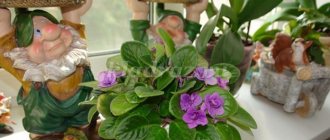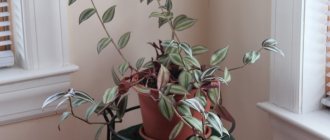The renovation is complete, but it seems like the interior is missing something? Try adding plants to your decor - they will add a touch of freshness and coziness, and the room will look “more alive” and cleaner. But it’s not enough to just put one flower. In order for the interior to sparkle with new colors, you need to familiarize yourself with the basics of phytodesign - it’s a whole science!
Ways to place plants in the interior
Many people are accustomed to the fact that if there are plants in a room, they must be on the windowsill or on the floor. But there are many more ways to effectively plant green spaces. In addition, in addition to their decorative function, flowers can also adjust the size of a room, hide flaws and emphasize its advantages. Most often, designers use the following interesting techniques:
- Vertical gardening. In this case, plants can either climb along the walls or hang from the ceiling. This technique helps to zone the space, dividing it into two parts. This is especially true for studio apartments or rooms where several people live.
- As a background. Plants can be not only an expressive highlight of the interior, but also a backdrop for creating a certain atmosphere. As a rule, this is used in eco-style - a green wall above a bed or sofa looks more appropriate here than ever.
- Visual increase in ceilings. Low ceilings put pressure psychologically, making the interior feel uncomfortable. There are many design ways to hide this flaw, one of which is the use of climbing plants. They seem to pull the walls up, giving volume and depth to the room.
When landscaping, it is important to consider the size of the room. The rule applies here for all types of decor: small objects for small rooms. Avoid large plants and opt for small hanging pots. To prevent them from looking lonely, place a small flower in an expressive vase on the table.
In rooms with wooden furniture, woody plants, such as palm trees, look very harmonious. But do not refuse them if the interior does not have wooden textures - plants are appropriate in almost any setting.
With the help of plants, you can create interesting compositions that highlight the features of the interior. For example, in a black and white room, create a green corner from several plants with different heights of stems and leaves - such differences will emphasize the contrasting color palette.
Recommendations for selection
Let's consider the main vectors that you need to focus on when arranging your home miniature botanical garden.
Choice based on style
The style of the room is one of the most important factors in choosing vegetation:
- Bonsai and bamboo harmonize well with the Japanese style. Dwarf plants of bizarre shape are integral to the culture of the Land of the Rising Sun.
- The oriental flavor echoes the pachyras and orchids.
- Fans of vintage design will love the indoor rose.
- The classic interior is in harmony with flowering plants: begonia, violet or hydrangea. As an additional decor, you can use flowerpots decorated with stucco.
- Bengal ficus and dracaena will decorate a room decorated according to the canons of the Mediterranean style.
- Camellia and cyclamen are associated with English and French interiors.
- Plants also fit into a minimalist interior. At the same time, a large number of flowerpots will be unnecessary. 2-3 large specimens are quite enough. These can be yuccas or dracaenas.
- High-tech design is also no stranger to the use of vegetation in the interior. This strict style is for busy people, so strict succulents are the best option.
- The colonial-style furnishings go well with palm trees, monsteras and large ficus trees.
- The fusion style is associated with the use of bright plants with an unusual configuration and (or) texture in the interior. Marrants and crotons fit perfectly into the style.
The degree of illumination is an important factor in choosing vegetation
When planning to purchase flowers, be sure to consider the level of illumination in the home:
- For poorly lit rooms with windows facing north, shade-loving species are suitable: dracaenas, spathiphyllums, dieffenbachias, monsteras and ferns. Ficuses and beautiful anthuriums are suitable for darkened rooms.
- A well-lit room with windows facing south will be decorated with prickly pears, aloe, camellias or sambacs.
- When windows are facing east, species such as violets, myrtle, oleanders, small-leaved ficus, dracaena or fuchsia are used.
- If the windows of the room face west, gasteria, begonias, sansevierias, asparagus or date palms are used as decoration.
We take into account the functionality of the room
The purpose of the room plays perhaps the most important role when selecting plants. For relatively spacious living rooms, flowers of the hanging type and (or) in floor pots are suitable. It is advisable to decorate the dining room with small-leaved species, such as hibiscus or spathiphyllum. Shade-loving species will thrive in the hall. And for a children's room and bedroom, plants that release oxygen at night are optimal.
An additional requirement for flowers in the nursery: they must be free of thorns!
Species that tolerate high temperatures and high humidity will take root in the kitchen.
Installation methods
Even if you use the same plants to decorate a room, they will look different, depending on the chosen arrangement method. The traditional situation with the arrangement of flowers on the windowsill is far from the only option:
- Planting plants in containers intended for installation on a table or floor remains relevant.
- There are hanging flowerpots for hanging plants.
- Floor stands for flower pots look elegant.
- Elongated containers are used to create a “bed” of small bushes.
- Containers with several levels are suitable for small spaces.
You can also experiment with materials for making containers for planting plants. The use of wooden elements or forged decorations makes the interior very advantageous. When decorating with flowers, you can also take into account the canons of the teachings of Feng Shui.
How to properly use plants in the interior
Plants, as we have already noted, can play both the role of a background and be accents. In the first case, the furniture should be noticeable so that it does not get lost in the interior. But when you want to highlight plants, you need to choose a neutral background. Avoid brightly decorated walls, wallpaper with large patterns and large paintings. Also avoid furniture with expressive upholstery - it should not attract all the attention.
Plants with large leaves can be placed against wallpaper with a small, discreet pattern, such as polka dots or stripes. But for small-leaved ones it is worth choosing a plain background, otherwise the leaves will merge with it. This recommendation will help make the interior balanced and harmonious.
When adding green notes to the environment, you need to not overdo it. Plants are just “notes”; they are not the main subject in the interior, but only complement it, unless, of course, you plan to turn the room into a greenhouse. To keep the interior from looking like a jungle, use a moderate number of plants. You can even limit yourself to one expressive plant and complement it with thematic decor - pillows with plant images, curtains with a tropical pattern or wicker furniture.
To highlight simple plants, plant them in original colored vases. But for large and expressive flowers it is better to use simple pots, otherwise the plant will attract too much attention. Of course, you need to remember that plants are not simple decoration that you can set and forget about. Each crop requires special conditions, proper watering and care. When choosing greens, you should pay attention to this first, otherwise the plants will simply die.
Carefully read the rules for caring for the plants you like. Try to create the necessary conditions for them, and if that doesn’t work, look for other crops. Fortunately, there will be no problems with this now - there are many articles on the Internet about caring for plants.
Violets
In ordinary violets, the diameter of the rosette reaches a maximum of 20-25 cm, and if you choose midi and mini varieties, they grow to only 6-15 cm. Breeders have developed a huge variety of these plants, the flowers of which can have unusually shaped petals, be one-, two- and three-ton, with specks and a velvety border.
No less interesting are the leaves of modern violets, painted in a variety of colors.
Basics of phytodesign
The easiest way to green your interior is to seek help from an experienced designer. But this can be expensive, and furnishing your home yourself is much more pleasant. Although it will not meet all the rules of interior design, it will definitely acquire uniqueness and reflect the character of the owner. And to do this competently, you need to familiarize yourself with the basic nuances of phytodesign.
When choosing plants, you need to remember that they not only decorate the premises, but also require special conditions and proper care. But that’s not all: some crops can be harmful and even life-threatening for family members. For example, very often you can find Dieffenbachia in the interiors of residential buildings. But it is not recommended to install it if there are small children or animals in the family - the juice of the plant is quite poisonous.
Choose plants that have a positive effect on human well-being. Decorate your interior with these crops, and you will forever forget about stress and poor health:
- Lavender is a real antidepressant. It relieves headaches, helps you fall asleep faster and get rid of anxious thoughts. The pleasant smell of flowers reduces high heart rate and relaxes.
- Physalis is a very bright and beautiful plant with expressive fruits. But in addition to its attractive appearance, it is also very uplifting.
- Geranium has such a fragrant scent that it can significantly reduce anxiety levels.
- Peppermint is a plant used everywhere. You can even find mint chocolates on sale, let alone interior decor. It relieves fatigue and irritability, and in the course of research by psychologists it was even found that mint helps fight depression.
- Rose is a very beautiful plant that has become a symbol of love and attention. Bouquets of roses add romance and luxury to the interior, and give the owner a good mood.
- Aloe is another crop that can compete with mint in popularity and breadth of use. Aloe is used in medicine and cosmetology, and even helps with weight loss. The juice of this plant is indicated for chronic gastritis and loss of appetite. And in the interior it perfectly purifies the air, fills it with oxygen and helps you fall asleep. In ancient Egypt, it was believed that aloe could drive away evil spirits.
Another interesting feature of some crops is the ability to purify the air, removing dangerous fumes from it. If you have recently painted the walls, carried out renovations, or your room faces the roadway, filter plants will come in handy more than ever.
In 1989, NASA conducted a study that identified the best plants for cleaning rooms. Some of them can neutralize air pollution by more than 85%. The best purifying plants that look interesting and decorate the interior:
- Anthurium Andre humidifies the air, purifying it of harmful xylene and converting it into safe chemical compounds.
- Golden lotus is perfect for installation in the shade. It purifies the air from formaldehyde and benzene. However, it is worth remembering that this plant is very poisonous, so keep it away from children and animals.
- Chlorophytum. The plant received another name, “spider,” due to its long, spreading leaves. Eliminates benzene and formaldehyde, in addition, it is completely safe for children and animals.
- Climbing ivy. Another great choice for dimly lit rooms. The shade-loving plant actively fights against benzene, formaldehyde and carbon monoxide, and also eliminates mold.
Indoor plants in the kitchen interior
A favorable location for most plants. All conditions for their comfortable growth are provided here: moderate humidity, frequent ventilation and plenty of sunlight. But there are some peculiarities here too.
Plants that love the warmth of the sun should be placed on the windowsill: dracaena, monstera, agave, orchid and, of course, cactus. Shade-loving crops should be grown in the darkest corners of the kitchen - on small tables away from the window or on special shelves. Do not place plants near the refrigerator and stove - the air in these places is either too cold or too hot - this is destructive for many crops. The same recommendation applies to the sink - splashes of detergent and grease will splash on plants standing next to it.
Home greenhouse on a stepladder
If the window sills are small, the coffee tables are occupied, or you just want something new, then create a mini-greenhouse right on a stepladder or old staircase. Pre-paint the stepladder in the desired color. You can also store books and any other decor on it besides flowers or pots of live grass.
TIP: Scandinavian, modern and minimalist interiors will suit any variation of pots - from metal and mirrored to old wine bottles. And pots made of dark clay and ceramics will fit into classic interiors.
Suitable here: https://dg-home.ru/catalog/vazy/
Home greenhouse on a stepladder
Home greenhouse on a stepladder
Home greenhouse on a stepladder
Plants in the living room interior
This is the heart of all housing, and special attention is paid to its interior. In most cases, this is a spacious room, so tall and large plants in large vases look appropriate here. Show originality and abandon classic pots in favor of floor racks and whatnots - they will turn plants into the highlight of the interior.
Bedroom with indoor plants
The atmosphere here should be calm and peaceful. The decor, including plants, is selected precisely according to this principle. Do not use flowers with strong aromas - they will interfere with sleep, and in the morning you risk waking up with a headache, because you have been breathing these smells all night.
Just a couple of non-flowering and slow-growing crops will be enough, which will look especially beautiful in a pot over the bed. Avoid an abundance of lilies and orchids - they absorb a lot of oxygen, which will cause dizziness and poor health of the owner.
Plants in the hallway
A person is greeted by his clothes, and an apartment by his hallway. It is she who makes the first impression on guests, so you need to try to make it cozy and stylish.
As a rule, the hallway is quite cramped and lacks light. For this reason, it is worth choosing plants that tolerate darkness well: begonias, violets, clivias, fuchsias, chlorophytum, aspidistras. Plants framing mirrors, paintings and shelves look interesting. If there is a niche in the hallway, it will be an excellent place for a large outdoor plant in a vase.
Dwarf roses
While garden roses grow up to several meters in diameter, indoor roses are very compact and take up minimal space. They are attractive with their miniature fragrant buds, which can be of a variety of colors: pink, yellow, cream, burgundy, scarlet and others.
Like their street counterparts, they are quite capricious, so before purchasing you should evaluate your strengths.
Live indoor plants in the bathroom
Plants in the bathroom are quite rare, and the reason for this is poor lighting, high humidity and lack of space. However, owners of private houses are lucky, because the bathroom can be equipped with windows. Then it can be decorated with moisture-loving plants. Monstera, violet, and Japanese fatsia are perfect.
If there are no windows, but you still want to add green notes to the bathroom, use artificial plants. Some people think that such decor makes the interior lifeless, but you just have to look hard and you can easily find imitations of plants that cannot be distinguished from the real ones.
Indoor plants add coziness to any interior and create a homely atmosphere. The main thing is to choose them correctly, taking into account the characteristics of each culture. Don’t forget to water your flowers on time, and they will delight you with their beauty for many years!
Fashionable ideas for interior floristry
The top fashionable interior innovations for 2022 include indoor plants placed in glass florariums. This is a stylish home decoration in the form of a mini-garden, enclosed in a bottle, aquarium or jar. Dwarf plants and succulents are suitable for creating such decor.
It is worth noting that landscapes in glass containers are a temporary decorative element. The green spaces are growing, and one day they will become cramped in the florarium. In such a situation, they need to be transplanted into a larger vessel or a regular flowerpot.
Until recently, artificial flowers were a symbol of bad taste and bad manners. But modern production technologies have made it possible to produce decorative compositions that look almost no different from living ones. Such decorations have many advantages: they do not need to be watered or replanted, they are not susceptible to diseases and do not cause allergies.
Source.
